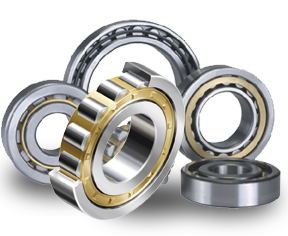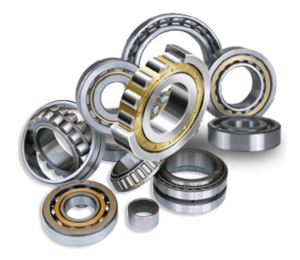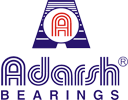What Are Cylindrical Roller Bearings?
Spherical roller bearings are also commonly known as ball bearings or cylindrical rollers because of their cylindrical shape. The inner and outer rings help guide these balls along their respective raceways for smooth movement within them. This prevents friction between surfaces that would otherwise cause interference with each other or cause damage to one or both parts if they come into contact with each other during operation (such as when operating heavy machinery.


Cylindrical Roller Bearings Design
The inner and outer rings of the cylindrical roller bearings are separated by a series of cylinders that serve to sustain both rings as well as lessen the overall frictional load. Depending on the version you’re using, these cylinders are supported by a rib or cage attached to either an inner or outer ring.
The number of cylinders or rollers employed in a cylindrical roller bearing, on the other hand, may vary, and increasing this number will result in an increase in total performance for obvious reasons.
Cylindrical Roller Ball Bearing Specifications
Static radial load and axial load
These are the maximum radial and axial loads, respectively, a bearing may resist without enduring deformation.
Bores
In case of bore size 4 or more, to know the diameter of the bore in mm, you need to multiply the size of the bore by 5.
Dynamic radial load & axial load
These are the final radial and axial loads within which the identical bearing group having its outer rings fixed, may withstand a rating life of 1 million inner ring revolutions.
Grades
To lessen stress concentrations, these rollers are capped or end-relieved. Due to the minimal friction created by this design, high-speed applications are possible. It is usual to find cylindrical roller bearings in precision grades like RBEC-5, according to the Roller Bearing Engineers Committee (RBEC).
Ratings
The accuracy and tolerance range for various types of bearings are described by RBEC ratings. The bearing tolerances are often tighter the higher the RBEC number. Typically, oil that also acts as a coolant is used to lubricate cylindrical roller bearings.
ENQUIRE NOW
Types of Cylindrical Roller Ball Bearings
Single-Row Cylindrical Roller Bearing
Bearings that can be separated are single-row cylindrical roller bearings. Two flanges of the bearing ring serve as guides for the rolling element. The inner ring, outer ring, rolling element, and cage make up the majority of single-row cylindrical roller bearings.
Full Complement Cylindrical Roller Bearing
The full complement cylindrical roller bearings offer a higher bearing capacity since the ring raceways are packed with rollers and lack a cage. There will also be some relative slippage between the rollers because this sort of bearing lacks a cage to separate and guide the rollers. Therefore, when compared to standard cylindrical roller bearings, their operating speed is slower and their noise level is higher.
Double-Row Cylindrical Roller Bearing
Double-row cylindrical roller bearings can be separated and are simple to put together and take apart. Such bearings can handle strong radial stresses because to its second row of rollers. Two different structural variants are available for double row cylindrical roller bearings: cylindrical and tapered bores.
Four-Row Cylindrical Roller Bearing
Four-row cylindrical roller bearings are typically utilized as main roll bearings on metallurgical equipment. It is the most commonly used rolling mill bearing due to its compact construction, superior rigidity, and high bearing capacity. The axial load cannot be supported by this kind of bearing. Consequently, in order to withstand an axial load, it must be used in conjunction with a thrust bearing.
Applications Of Cylindrical Roller Ball Bearings
Industrial Applications
Electric motors, railroads, motorbikes, pumps, wind turbines, and gearboxes are just a few applications in which cylindrical roller bearings are used.
Mining & Power Generation
Cylindrical roller bearings are used in various fields such as mining, power generation, petroleum production, power transmission, and aggregate crushing.
Motors And Electronics
Cylindrical roller bearings are used in fans and blowers, electric motors, machine tools, and traction pumps and motors.
Construction Industry
These are used as equipment for construction, metal recycling and cement processing.
Benefits of Cylindrical Roller Ball Bearings
- In comparison to a ball bearing, it has a stronger resilience to wear and stress.
- Its distinctive shape makes mounting and demounting easy.
- It is made to withstand a combined thrust load and the radial load of the N and NU types (NJ and NUP type).
- Outstanding performance and endurance even in demanding circumstances.
cylindrical roller bearing manufacturers, cylindrical roller thrust bearing, single row cylindrical roller bearing, double row cylindrical roller bearing, sealed cylindrical roller bearings, radial cylindrical roller bearings, split cylindrical roller bearing, high speed cylindrical roller bearings, cylindrical roller bearing catalogue | Spherical Roller Bearings | Needle roller bearings | Tapered roller bearings | Cylindrical Roller Bearings | Linear Motion Bearings
